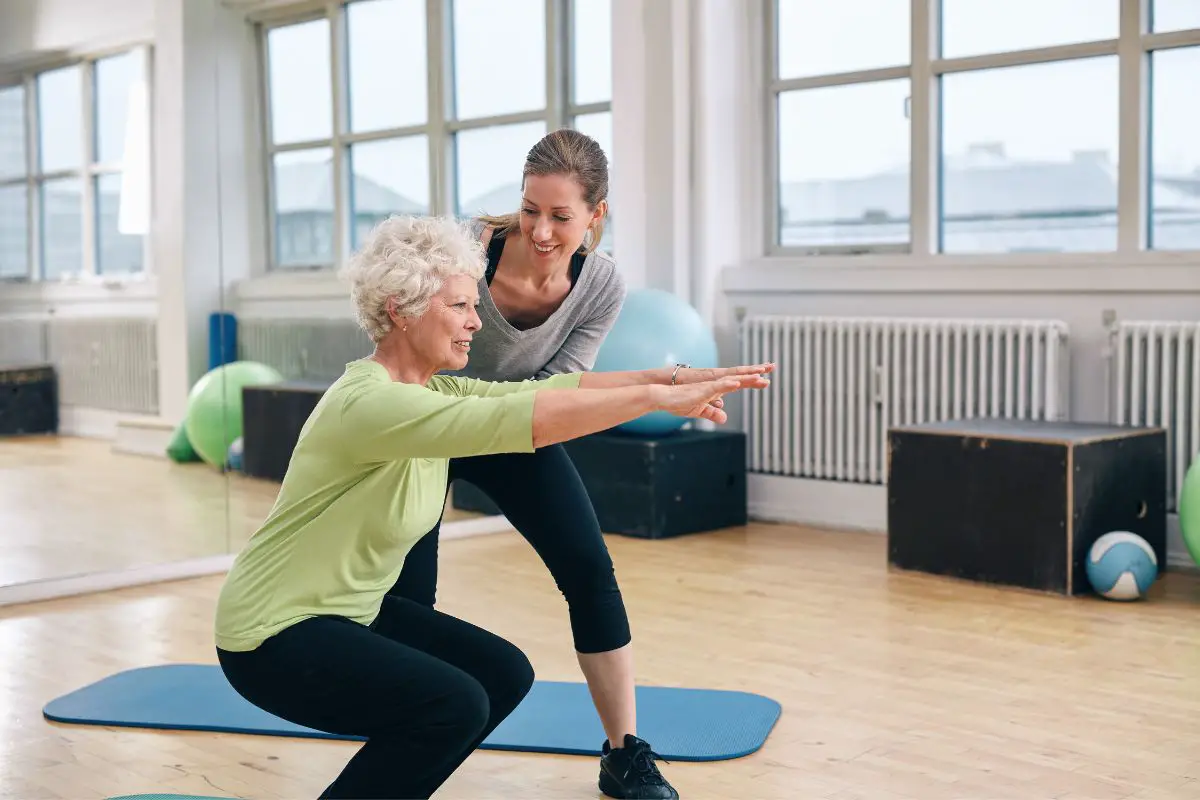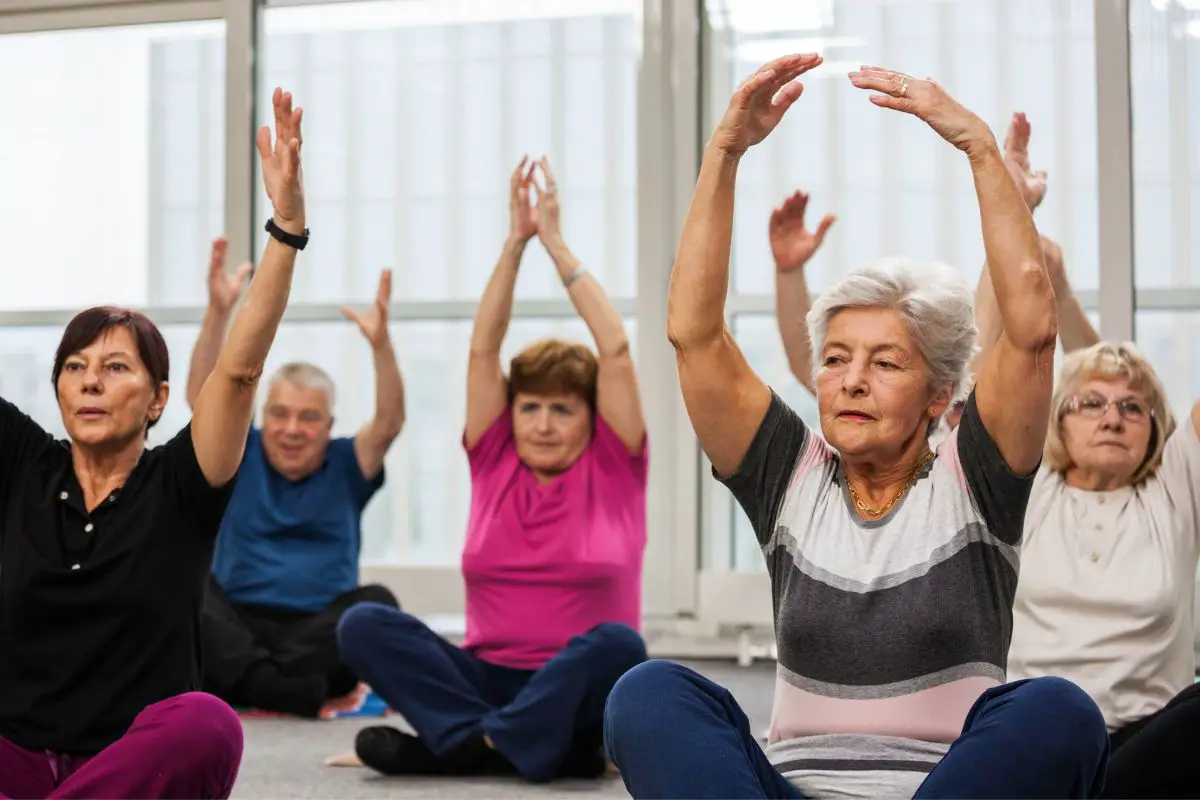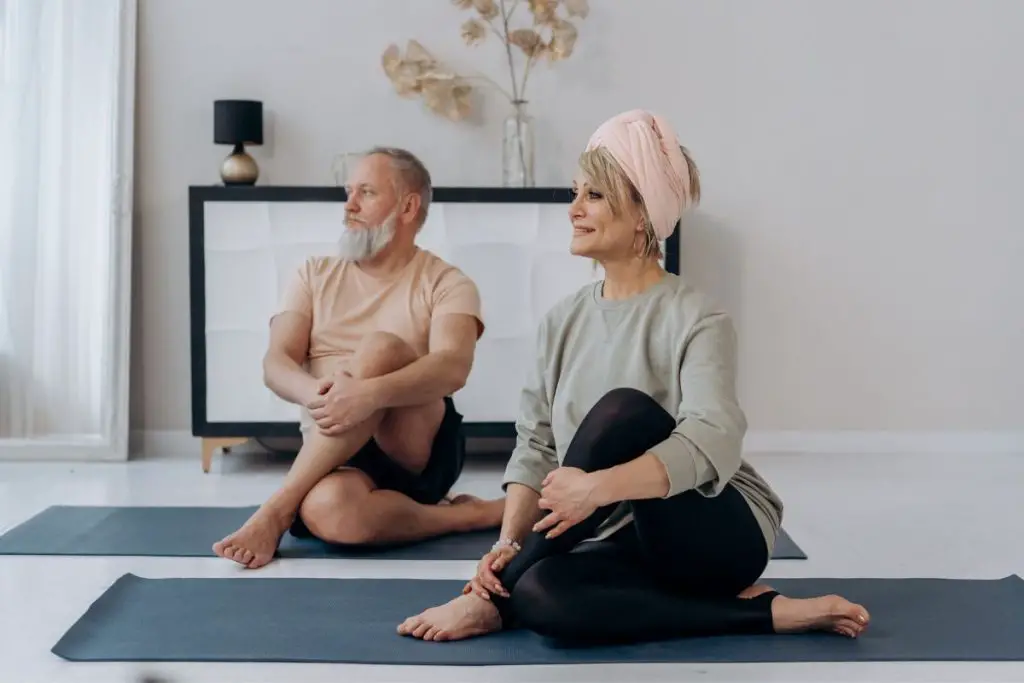Arthritis And Exercise: Can Pilates Really Help? (The Answer Is YES!)
One in four people in the United States has arthritis or stiffness found in one or more joints according to the U.S. Centers for Disease Control and Prevention (CDC).
Osteoarthritis is the most common type of arthritis, also known as damage to a joint’s cartilage.
Essentially, the cartilage acts as a shock absorber; however, when this is damaged it results in the bone grinding on bone.
This is what causes restricted movement and arthritis pain, which can lead to a range of other issues including the inability to perform daily activities or, even, work.
However, there’s a solution to ease this pain. This solution lies in Pilates. With this in mind, the article is going to explore how Pilates and exercise can help arthritis sufferers.
Let’s get straight into it!
Benefits Of Pilates For Arthritis
While it seems counterproductive; however, physical activity can actually help decrease arthritis pain.
The term “move it or lose it” can definitely be applied here.
Moving around helps to prevent any stiffness or pain from airing in the joints, similar to how motor oil lubricates your car’s engine to allow it to run smoothly.
In addition to this, exercise also increases confidence, improves the quality of life, prevents depression, and lifts our moods.
According to the CDC, you should be performing approximately 150 minutes of moderate-intense physical exercise for those who suffer from arthritis.
While this may seem daunting, when split up into smaller exercises throughout your days or week, it is much more manageable.
Likewise, it is also important to undertake the correct forms of exercise to prevent any worsening arthritis pain.
For those suffering from osteoarthritis, as well as other types of arthritis including rheumatoid arthritis, anything that could be jarring towards your joints should be avoided at all costs.
Rather, carry out low-impact exercises that help to maintain joint movement, as well as breathing, increasing your heart rate, and stretching.
Why Pilates Is A Great Choice For People With Arthritis?

From looking at the benefits above, it is clear that Pilates would be a good choice for those with arthritis.
Firstly, Pilates highlights core stability which improves spinal flexibility and balance, both needed for performing the tasks of everyday life, such as grabbing objects from tall shelves and driving your car.
Additionally, Pilates helps to improve or maintain movement in the joints, which is also beneficial for those suffering from arthritis.
A Pilates workout can be performed on either the mat or specifically created equipment, this is known as Pilates apparatuses, where resistance springs are utilized to strengthen and tone the body in a fast and balanced way.
For instance, Leg Springs on the Cadillac or Leg Circle or Footwork session on the Pilates Reformer helps to strengthen surrounding muscles found in the hips, ankle joints, and knees without causing an extra impact.
Likewise, the arm spring series and the RollBack and Push Through exercises on the Cadillac and Pilates Tower help strengthen the muscles found in the shoulder girdle.
All these muscles, small and large, help to sustain the joints while encouraging movement more efficiently.
Getting Started With Pilates When You Have Arthritis
Before beginning any exercise program, it’s always important to check with your doctor to receive the all-clear.
Once this has been achieved, ideally you will want to find a qualified teacher in your local area who has experience working with arthritis sufferers.
If you’re able to, undertaking private lessons is the most rewarding.
In one-to-one sessions, the instructor can offer helpful tips and tricks for your body specifically.
These are also great for learning how to modify exercises to best suit your circumstances, whether you want to progress to semi-private sessions, group classes, or even online workouts.
When starting out, it’s important to be patient. You should always start slowly and maintain consistency rather than overdoing it and potentially getting burnt out.
Pilates Modifications For Arthritis

For group sessions, arrive early and let the instructor know of any contraindications.
You may even need to modify some of the exercises to suit your requirements.
For instance, if you have arthritis in the knees, then you may want to avoid deep flexing and place a soft towel under your knees to prevent further injury.
Your instructor should be able to guide you effectively.
Effective warm-ups before Pilates also help to minimize pain and facilitate movement. This could involve walking or even taking a hot shower or bath.
It’s always important to listen to your body and not push through any pain. Take as many breaks as you need, or even modify the exercise to allow you to perform it more comfortably.
Initially, you may experience discomfort, so you should not feel discouraged if after a few workouts you feel achy.
However, if this pain doesn’t subside, or you start to feel worse, you should stop your exercise and consult your doctor about what exercises you can and can’t do.
3 Pilates Exercises Techniques For Arthritis
Below, you will find three Pilates exercises that are great for those suffering from arthritis.
1. Oblique Sit-Up
Performing this oblique sit-up exercise is a great way to strengthen your abdominal muscles. Likewise, it strengthens your calf muscles and tones up your stomach.
Steps:
Position yourself laying flat on the mat with your hips parallel to the floor. Your fingers should be crossed behind the head and ear.
Without lifting your arms, raise one elbow to your opposite knee. Ensure that you don’t apply too much pressure on the neck if you begin to experience discomfort.
2. The Hip Roll
This is an easy and simple exercise that helps to improve the motion surrounding your hip joints.
It strengthens the muscles of the hips and surrounding areas while reducing the risks of hip osteoarthritis.
Initially, this position may be painful in areas such as the lower back and knees.
Steps:
Position yourself lying parallel to the ground, stomach towards the mat.
Place your hands on your forehead, with one leg positioned perpendicular to the ground while keeping the other leg straight.
3. The Lunge
This exercise strengthens the knees, hips, and quadriceps while improving arthritis found around the hips and knees.
Steps:
Position your right heel inside of the left foot so the right knee is facing towards the right.
Then, move the right leg out diagonally with a wide stance to allow your legs to come into a lunge position.
This moves the bent leg at a perpendicular angle. Arms are positioned in front, next to your ears – bringing your body into a diagonal line.
Final Thoughts
While exercise may sound counterintuitive when suffering from arthritis, physical activity, such as Pilates, can decrease joint pain and even improve joint movement.
The great thing about Pilates is that you can perform it at a rate that suits your requirements.
However, it’s important not to overdo any exercises and always listen to your body. Hopefully, this guide has informed you about how Pilates can help those with arthritis.





